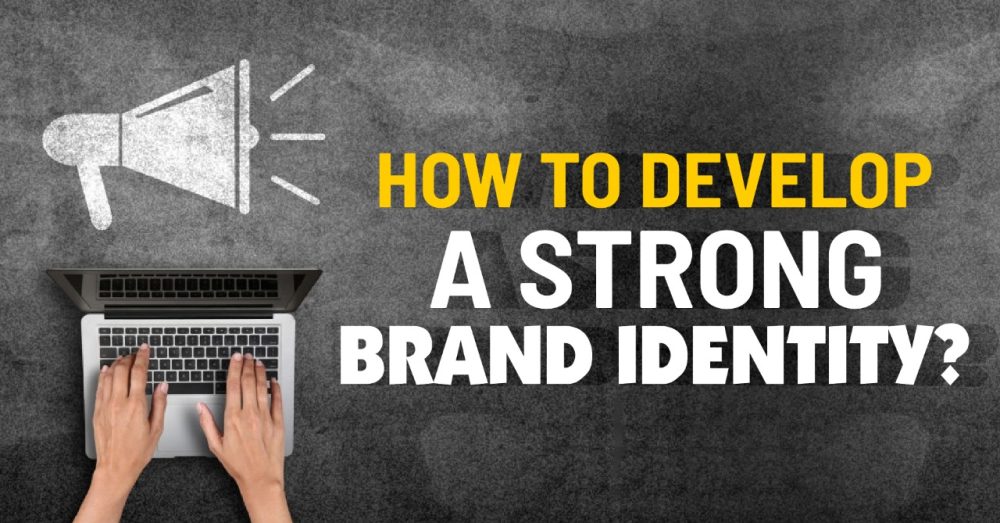Creating a great brand does not have to be complicated; however, it will take time and effort to push the boundaries of your business and stand out, not only in terms of service or product but also in terms of visual appeal. When a buyer decides whether or not to make a purchase, the first thing that comes to mind is your company’s brand identity.
This article will study how to develop a solid brand identity, beginning with the most basic and advancing to the most complex. But, before we go any further, let’s define what a solid brand identity is and why your company needs one.
What Is A Solid Brand Identity, And Why Does A Company Need One?
A solid brand identity is more than just a logo or an advertisement campaign; it is how a company displays itself to the public and interacts with its customers. Product design, audience targeting, staff associations, and customer service are all part of it. There isn’t a single aspect of a company that isn’t part of its strong brand identity.
Businesses require strong brand identity for the following reasons:
- It improves the company’s image.
- It conveys stability by delivering a clear message and a crisp image for a long-term feel.
- It increases customer loyalty by allowing them to interact with your company.
- It aids in brand differentiation, allowing customers to choose your brand over competitors.
- It distinguishes your company because it allows you to connect with your customers and create a memorable customer experience every time you interact with them.
5 Steps To Develop A Solid Brand Identity
Following are the steps to building a strong brand identity –
Conduct a comprehensive brand audit
When it comes to how to develop a solid brand identity, then the first step is to determine your market position, and who your target audience is; for this, you should first determine what is most important in terms of promoting growth, as well as examine how customers perceive the product or service. Furthermore, an in-depth competition study – which includes an examination of competitor websites, search engine optimization, brand identities, and advertising – will assist you in determining whom you will compete with for market share, what strategies to implement and how to differentiate.
A thorough brand audit will improve brand clarity, marketing consistency, competitive differentiation, potential customer acquisition, and brand equity. Furthermore, this brand audit will provide insights into whether to rebrand or not during rebranding, when considering establishing a new vertical, during an acquisition, and when attempting to connect with new audiences. Overall, it will help to develop a solid and effective brand identity.
Define your distinct value proposition and brand messaging statements
An essential business principle must be identified, such as its mission statement and values. It’s also critical to determine your brand’s value proposition to customers. This is the origin point for developing a brand that accurately represents your company. A value proposition is a business promise of value that describes how a business product or service’s benefit will be provided, experienced, and acquired. This will explain why a product or service is appealing, why customers should buy it, and how its value differs from similar offers.
Adidas, for example, is a well-known company that provides three value propositions: innovation, customization, and brand/status, with innovation being a top priority. Adidas’ fundamental principles include performance, passion, integrity, and diversity. These guiding principles have kept Adidas at the top of the sport for decades. They ensure that the company’s strategic approaches align with its mission and vision statements. The company’s success has resulted in the development of a strong brand. It is one of the world’s oldest shoe brands.
Develop the Creative Brand Elements For Your Brand
The next step is to create the brand’s look, feel, and voice, which will be reflected across all marketing platforms, including the website, social media, packaging, and advertisements. Your brand voice should be distinct, consistent, resonate with your customers, and reflect your company’s values.
Imagine your brand as a person when developing a brand voice. Consider your brand as a person. What personality traits would your brand adopt, and which would it actively avoid if it were a person? What are the terms and stylistic choices that your company consistently employs? All of these elements combine to form your brand voice. This personality is reflected in social media posts, newsletters, formal internal communications such as company announcements and advertising. So, if you listen to your customers, you will hear that distinct voice.
Starbucks, for example, has an active and dynamic brand voice that is simple and precise. The practical tone is most noticeable in locating products and assisting customers with the ordering process. It also blends well with the dynamic tone, bringing out its personality. The expressive voice effectively tells a passionate coffee story or shares a brand story. Their brand tone instils a sense of belonging, joy, and relevance in their target audience.
Develop strategies for establishing a strong brand’s identity
Many strategies must be implemented in order to increase powerful brand identity and strengthen the brand. It entails creating a solid social media presence on LinkedIn, Facebook, Twitter, YouTube, Pinterest, and Instagram and utilizing all necessary platforms to interact directly with the targeted target audience. Furthermore, ensure that your brand’s goals are reflected in your company’s website and online reputation. Also, ensure that your websites are mobile and search engine friendly, that they load quickly, and that customers can contact you in various ways.
Every successful brand strategy, in our opinion, must include Purpose, Vision, Values, Positioning, Personality, Voice, and Tagline. You must create a solid and unique brand identity in the minds of your target audience so that when they see your logo — or even something related to your brand — they immediately think of it.
Maintain your brand’s strong identity by keeping an eye on it
Brand monitoring can assist you in better comprehending the overall sentiment that people have towards your brand because it’s impossible to tell what you’re doing right and wrong without measuring KPIs, just as it is with other areas of your marketing. Monitor how people talk about and connect with your brand using Google Analytics, surveys, comments, social media discussions, and other methods.
A sentiment analysis examines the specific language used in comments about your brand and can tell you whether people are speaking positively, negatively, or neutrally about your brand. This is an excellent method to read between the lines and see how people are reacting to specific posts, campaigns, or your brand in general on a large scale. This will allow you to change your brand whenever you need to, whether correcting a mistake or improving your company’s identity.
You should also keep an eye out for potential comments that can help you improve your product or service. Make sure that you have a reliable method in place for gathering feedback from your audience. It’s equally necessary to have a system for relaying online feedback to the appropriate people within your company who can make the required changes and improvements.
Putting It All Together
Your brand needs to stand out hence knowing how to create a solid brand identity is essential. This will grab the audience’s attention right away and set you out from the competition. Having a definite visual effect will help people see it and immediately know your brand’s product. To be remembered and believable, your brand identity should be constant. It should, however, be adaptable enough to grow and change with the company.
| Looking To Build A Solid Brand Identity For Your Business Contact Us |


















One Response